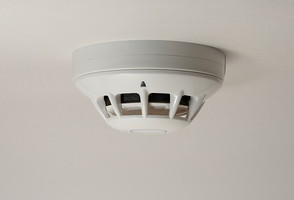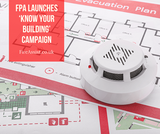Which type of fire detector is best?
With many fire detectors on the market it can quickly become confusing when it comes to deciding which fire detector is best. Fire detectors should be installed in all buildings in order to protect everybody inside as well as the premises. They work by sensing the products that are emitted when a fire occurs such as smoke, heat, infra red radiation or gas (depending on the fire detector). Fire detectors then signal an alert, usually an audible alarm and a flashing red light so that everybody in the building knows to evacuate.
Fire detectors are great when installed in larger buildings and can work as an entire system so if the alarm was triggered somewhere in a large building, everybody inside the premises will be notified no matter where abouts they are.
There are four types of fire detectors to choose from; ionisation, photoelectric, heat and a combination of ionisation and photoelectric. To help you determine which fire detector is most suitable for you here is a breakdown of what each detector is designed for.
Ionisation fire detectors
Ionisation fire detectors typically have a constant electrical current running through them. This is activated and disrupted when smoke enters the chamber which in turn triggers the alarm. Ionisation fire detectors are ideal for alerting you about a fire which may be fast burning and are ideal for stairways, landings and offices.
Photoelectric fire detectors
Working in a similar way to ionisation fire detectors, photoelectric alarms use a beam of light instead of electricity. This means that when smoke enters the chamber, it scatters the light and the alarm begins to sound meaning they are great for detecting smaller fires than what an ionisation fire detector would be alerted for. Photoelectric fire detectors are renowned for their reliability and rarely produce false alarms.
Heat fire detectors
Heat fire detectors work by detecting a shift in air temperature when it increases. When flames are current, this heats up the air which in turn is sensed by the fire detector. This does mean however, that they can take longer before they begin to detect a fire and some false alarms have been recorded in buildings which may have high levels of dust or humidity such as storage facilities for example.
Ionisation/photoelectric fire detectors
A combination of both ionisation and photoelectric fire detectors is often considered by professionals as the best detector available. Using technology from both detectors, they ensure any presence of smoke is detected as soon as it is present.
So, if you want an all round reliable fire detector, the most accurate and reliable is the ionisation/photoelectric option which offers the quickest fire detection. Heat fire detectors however are often great when installed in garages or cellars. Finding the best fire detector for you all depends on your premises and where the detector will be installed. Once you have decided this, choosing your fire detector should be straight forward.
Recent Posts
-
The importance of managing false alarms - fire services and BS 5839 Part1
It’s really important to have a fire safety procedure in place should the worst happen. Having corre …22nd Mar 2021 -
FPA Launches ‘know your building’ campaign
The fire protection agency is the UK’s national fire safety organisation. It works to help identify …9th Mar 2021 -
Carbon monoxide poisoning, who is most at risk?
Every year there are around 60 deaths caused by carbon monoxide poisoning which can be avoided. With …23rd Feb 2021




